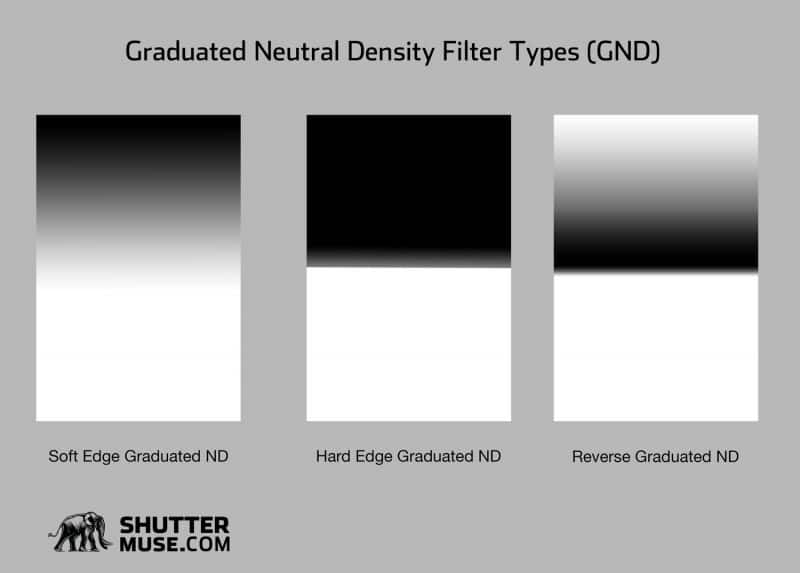What Does GND Stand for in Photography?
GND stands for graduated neutral density and is a type of photographic filter that allows a photographer to better control a large dynamic range within an image. Typically made from resin or glass, these filters are rectangular and feature neutral density that transitions from a specific amount, through to zero.
GNDs are most commonly created in 100x150mm sizing, but larger sizes are also available from some manufacturers. The rectangular shape means that you can use them in a 100mm filter holder, but adjust them up and down to place the transition over the correct part of your scene.
GNDs come in three different types, which offer various different graduation patterns – there are:
- Soft edge graduated neutral density filter
- Hard edge graduated neutral density filter
- Reverse graduated neutral density filter
The graduation patterns for these three types can be seen in the diagram below.
GNDs are useful when one part of your scene is much brighter than another. Typically this is the sky! The dark part of the filter is placed over the sky to hold back the brightness, and even it out with the foreground in the image. Soft edge filters are used when there are objects in the frame that stick up into the sky, such as mountains. Hard edged GNDs are used when there is a clear horizontal definition between the bright and dark area, such as the horizon. A reverse GND is used for sunset or sunrise when the sun is very close to the horizon. When this happens, you want the darkest part of the GND to be at the horizon where the scene is brightest.
Just like regular neutral density filters, GNDs are available with different amounts of density. The most common ones are 2-stop and 3-stop filters. If you need to brush up on your density terminology, please refer to this detailed article on neutral density names and terminology.



